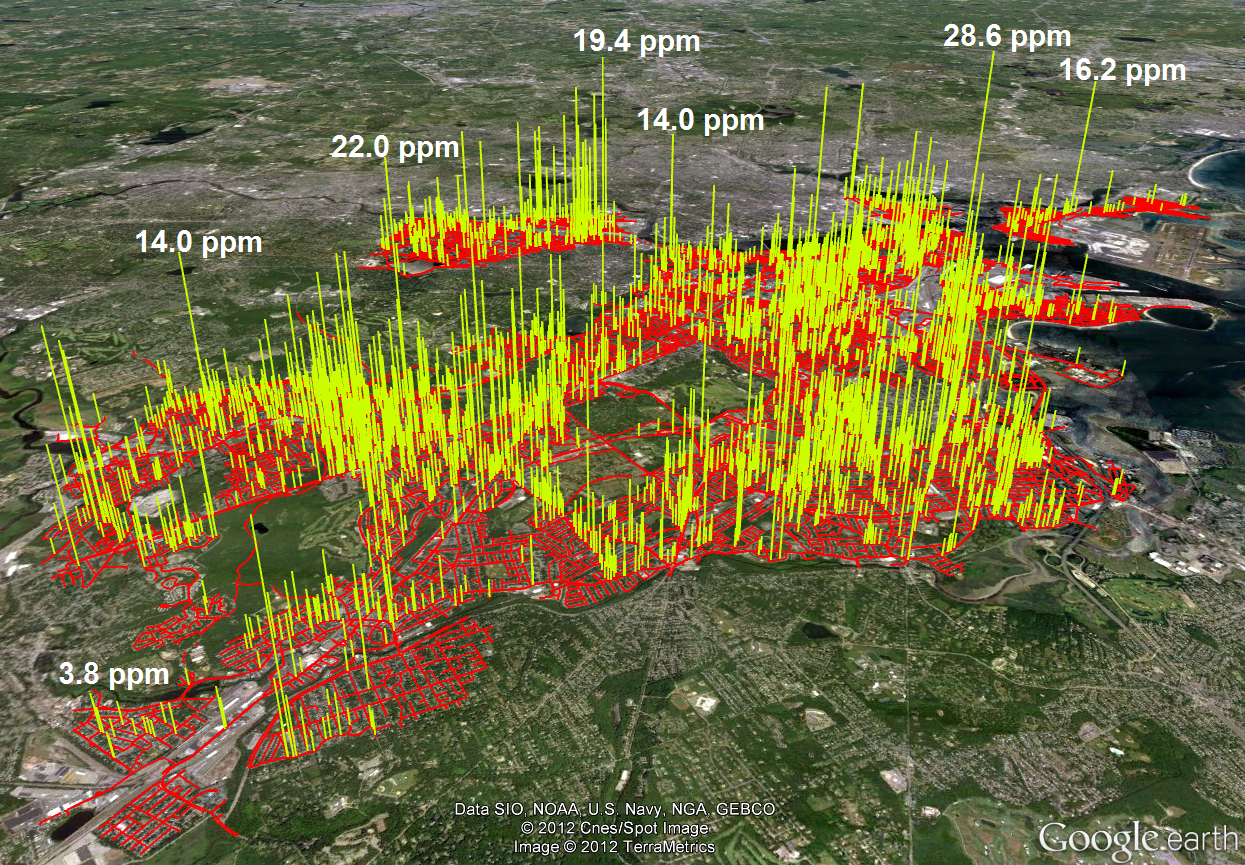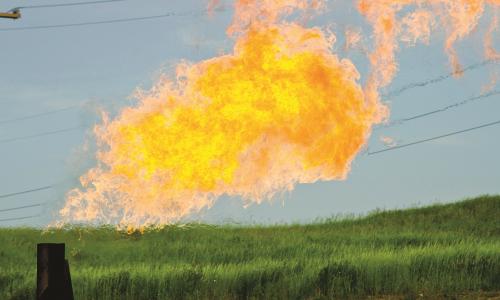In the early days of petroleum exploration, natural gas was not considered a useful product because of the difficulties in transporting it to markets. As a result, gas was simply burned off at the well or vented into the atmosphere.
Even today, flaring and venting continue in locations where local markets and gas transportation infrastructure are lacking, or where the gas itself is contaminated with other incombustible gases.
In 2011, the World Bank estimated that 5.3 trillion cubic feet of natural gas (25% of total U.S. consumption) is flared annually, mostly in developing countries that do not have gas processing infrastructure [1]. However, gas flaring has increased in the United States in recent years as oil production has expanded rapidly in places like the Bakken shale in North Dakota.
Natural gas processing

Although the natural gas we use in our homes and power plants contains more than 90 percent methane, several other substances may be mixed in with the raw gas first extracted from a well.
These substances can include water, carbon dioxide, hydrogen sulfide, liquid hydrocarbon condensate, and heavier gaseous hydrocarbons such as ethane, propane, and butane. Most of these components are separated from the methane at a processing facility, with the hydrocarbon byproducts recovered for other uses and the water, CO2, and other compounds disposed of as waste.
Because pure natural gas is odorless, a sulfur-based compound with a rotten-egg smell is added before it is piped to homes so that leaks can be noticed easily.
Natural gas transportation
The United States has an extensive and complex network of pipelines to transport natural gas from production areas to end users.
One of the first major U.S. pipelines was built in 1891 to carry gas from central Indiana to Chicago. Little further construction happened until after World War II, but the 1950s and 1960s saw the rapid expansion of a national gas pipeline network that continues to grow today [2].
The lower 48 states have over 300,000 miles of large transmission pipelines for shipping natural gas all over the country [3]. More than two million additional miles of smaller, low-pressure distribution pipelines deliver the gas to individual homes and businesses [4]. Today, pipelines supply more than 98 percent of the United States’ natural gas needs from sources in North America.
Natural gas is highly flammable, so the process of transporting it from wellhead to homes and businesses can be dangerous. The Pipeline and Hazardous Materials Safety Administration regulates natural gas pipelines and tracks injuries and fatalities associated with natural gas pipeline accidents in the U.S.
Between 2008 and 2012, there were 370 significant safety incidents at natural gas transmission pipelines, which were mostly caused by corrosion, equipment failure, and flooding. These incidents led to 10 fatalities and 85 injuries [5]. During this same time period, there were 311 significant safety incidents at natural gas distribution pipelines, which were mostly caused by excavation damage. These incidents led to 41 deaths and 230 injuries [6].

In addition to safety concerns, natural gas leaks from transmission and distribution pipelines are a significant source of global warming emissions. A 2012 study, which mapped urban pipeline leaks in Boston, found 3,356 separate leaks under the city streets. The study noted that Boston is not unique; other cities, like Boston, have aging natural gas distribution infrastructures, and similar methane leaks are likely widespread [7].
Liquefied natural gas, or LNG, offers a means of transporting natural gas across long distances where pipelines are not available.
To produce LNG, natural gas is compressed and cooled to around minus 260 degrees Fahrenheit, a step that converts the gas to a liquid and reduces its volume by a factor of 600. LNG can then be shipped in specially-constructed tankers for overseas transport.
Upon reaching its destination, the LNG is unloaded at a receiving terminal, returned to a gaseous state, and sent through local pipelines to end-users [8].
LNG requires substantial infrastructure to cool and compress the natural gas to liquid, ship it overseas, and return the LNG to gaseous form at the receiving end. In addition, the production of LNG and subsequent refrigeration during transport is highly energy-intensive. For these reasons, recent decreases in natural gas prices in the U.S. have made LNG uncompetitive with domestic gas delivered through pipelines.
In 2010, LNG accounted for 6 percent of the U.S. natural gas imports. Three-quarters of imported LNG came from Trinidad and Tobago, with the remainder from Qatar, Yemen, Norway, and Egypt [9]. LNG natural gas imports peaked in 2007, but declined sharply after U.S. natural gas prices fell in 2008.
[1] Global Gas Flaring Reduction Partnership. 2012. Improving Energy Efficiency & Mitigating Impact on Climate Change.
[2] U.S. Department of Energy. 2013. The History of Natural Gas.
[3] Energy Information Administration. 2008. Estimated Natural Gas Pipeline Mileage in the Lower 48 States, Close of 2008.
[4] U.S. Department of Transportation Pipeline and Hazardous Materials Safety Administration. 2013. Annual Report Mileage for Gas Distribution Systems.
[5] http://primis.phmsa.dot.gov/comm/reports/safety/SigPSIDet_2008_2012_US.html?nocache=9260#_ngtrans
[6] http://primis.phmsa.dot.gov/comm/reports/safety/SigPSIDet_2008_2012_US.html?nocache=9260#_ngdistrib
[7] http://www.bu.edu/cas/2012/11/20/thousands-of-natural-gas-leaks-discovered-in-boston/
http://www.washingtonpost.com/national/health-science/natural-gas-leaks-come-under-scrutiny-raise-questions-on-climate-impact/2013/03/03/23d1e0d4-7f88-11e2-b99e-6baf4ebe42df_story.html?wpmk=MK0000203
[8] U.S. Department of Energy Office of Fossil Energy. 2011. Liquefied Natural Gas.
[9] Energy Information Administration. 2012. U.S. Natural Gas Imports by Country.




